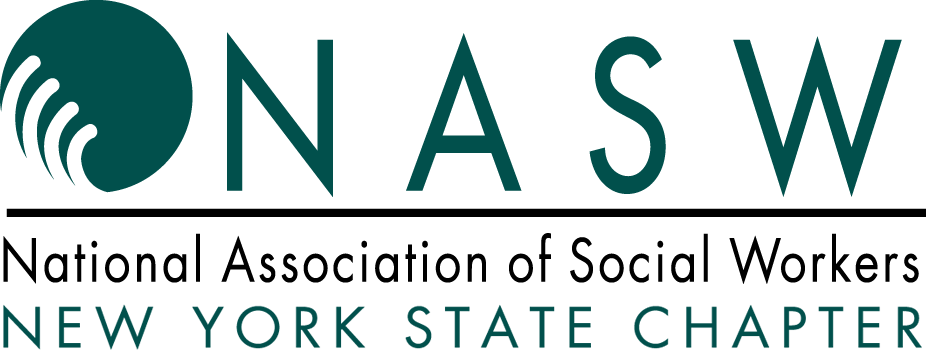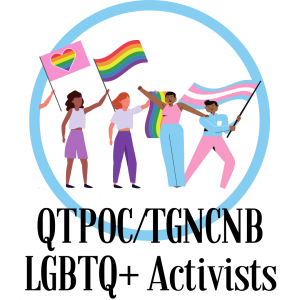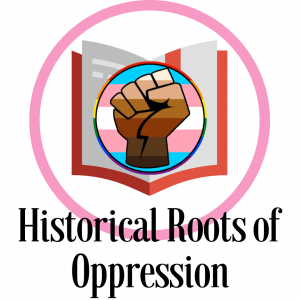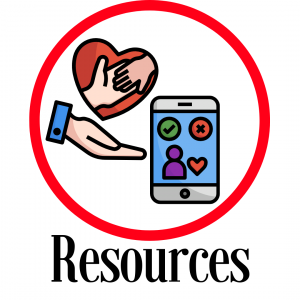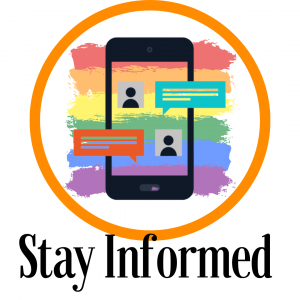This information is cited in "Dismantling Oppression, Changing the Narrative: The Lesbian, Gay, Bisexual, Transgender+ Community and The Role of New York State" a brief sent to Governor Andrew M. Cuomo prepared by Matthew S. Mackey, Leader of the "From the Ashes; We RISE" Town Hall series and Special Interest Group.
Throughout the history of New York State, LGBTQ+ individuals have played an integral role in the economy and culture, but they have not always been treated equally to their cisgender, heterosexual counterparts. LGBT+ residents of New York have been granted some protections through state legislation, yet there still remain areas where they are not accepted. In particular, LGBTQ+ youth are disproportionately more likely to be bullied, be depressed, face homelessness and commit suicide. In LGBTQ+ adults, these statistics manifest themselves by having a disproportionate rise in depression, anxiety, discrimination, substance-use disorders, and a variety of illnesses. Part of the reason for these statistics is an unspoken narrative in the acceptance of LGBTQ+ individuals in the state of New York caused by a lack of education, lack of representation, and the historical criminalization of LGBTQ+ individuals through the use of discriminatory legislation.The 14th Amendment of the United States Constitution applies equal protection to those the majority deems worthy of equality. Historically, those protections were not extended to members of the LGBTQ+ Community in New York until 2003 when the Sexual Orientation Non-Discrimination Act was passed, and then in 2019 when the state passed the Gender Expression Non-Discrimination Act. While these acts help protect the LGBTQ+ Community in the present and the future, these acts do not amend the impacts stemming from the State’s previous practices and policies. One of the previous policies which negatively impacted the LGBTQ+ Community was Sodomy Laws.
Dating back to the 1700’s, Sodomy laws, which barred consenting individuals from participating in anal or oral sex frequently were targeted at the LGBT+ community. Often, the sentences imposed by these laws would now be viewed as inhumane, as some sentenced people to death or life imprisonment doing hard labor or solitary confinement punishments. Sometimes LGBTQ+ people were targeted in police undercover sting operations. These laws were made unconstitutional by the New York Court of Appeals in 1980, and then federally by the Supreme Court in Lawrence v. Texas in 2003. However, the remnants of past convictions remain documented. LGBTQ+ individuals have had no method to have this documented criminalization erased, hence, that history still remains serving as a reminder to all New Yorkers that being an LGBTQ+ individual is shameful and wrong.
History of Sodomy Laws in New York State:
- 1787-1796, Sodomy was punishable by death and in 1788 also included forfeiture of all property to the state
- 1796- Reduced the sentence to a maximum of 14 years in solitude or Hard Labor
- 1801- raised the sentence to life imprisonment and either solitude or Hard Labor
- 1828- Lowered to max 10 Years in prison
- 1881- Raised to max 5-20 years in prison
- 1886- law was amended to include any “Voluntary Submission to carnal knowledge, regardless of gender
- 1892- limited Sodomy Laws to include Oral and Anal Sex regardless of Gender, retained 20-year Maximum sentence, no minimum.
- A study done in 1938 revealed that a sample of Gay Men convicted of various sexual offences in 1 year was 97%
- 1950- Sodomy was lowered to a misdemeanor- up to 6 months in jail.
- 1965- Reduced Sentence to 3 months, not including married couples.
- 1980- NY Court of Appeals rules Sodomy Laws unconstitutional.
Statistics of LGBT+ Individuals: Mental Health and Homelessness:
- LGB+ Youth are five times more likely to attempt suicide than their heterosexual and cisgender peers. 40% of Transgender youth have attempted suicide, compared to 5% of cisgender youth.
- 2 in 3 LGBTQ youth reported that someone tried to convince them to change their sexual orientation or gender identity, with youth who have undergone conversion therapy more than twice as likely to attempt suicide as those who did not. (Trevor Project, 2019)
- 71% of LGBTQ youth reported feeling sad or hopeless for at least two weeks in the past year. (Trevor Project, 2019)
- 71% of LGBTQ youth reported discrimination due to either their sexual orientation or gender identity (Trevor Project, 2019)
- LGB Individuals are twice as likely and Transgender individuals are four times as likely to develop or worsen a mental health condition and/or substance abuse disorder as heterosexual, cisgender individuals due to discrimination, prejudice, denial of civil and human rights, harassment, and family rejection, particularly for those with intersecting racial or socioeconomic identities. (National Alliance for Mental Illness, 2020).
- LGBT+ Individuals are 120% more likely to experience homelessness due to family rejection and housing discrimination. (National Alliance for Mental Illness, 2020).
- LGB+ Youth are five times more likely to attempt suicide than their heterosexual and cisgender peers. (National Alliance for Mental Illness, 2020). 40% of Transgender youth have attempted suicide, compared to 5% of cisgender youth.
- In 2015, 24% of NYC LGBTQ youth reported being bullied on school property, compared with 13% of non-LGBTQ youth. The percentage of LGBTQ youth who reported being electronically bullied was twice that of non-LGBTQ youth (21% vs. 10%)
Statistics from The 2021 Trevor Project National Survey on LGBTQ Youth Mental Health:
The content and methodology for The Trevor Project’s 2021 National Survey on LGBTQ Youth Mental Health were approved by an independent Institutional Review Board.
- 94% of LGBTQ youth reported that recent politics negatively impacted their mental health.
- More than 80% of LGBTQ youth stated that COVID-19 made their living situation more stressful — and only 1 in 3 LGBTQ youth found their home to be LGBTQ-affirming.
- 70% of LGBTQ youth stated that their mental health was "poor" most of the time or always during COVID-19.
- 48% of LGBTQ youth reported they wanted counseling from a mental health professional but were unable to receive it in the past year.
- 30% of LGBTQ youth experienced food insecurity in the past month, including half of all Native/Indigenous LGBTQ youth.
- 75% of LGBTQ youth reported that they had experienced discrimination based on their sexual orientation or gender identity at least once in their lifetime.
- Half of all LGBTQ youth of color reported discrimination based on their race/ethnicity in the past year, including 67% of Black LGBTQ youth and 60% of Asian/Pacific Islander LGBTQ youth.
- 13% of LGBTQ youth reported being subjected to conversion therapy, with 83% reporting it occurred when they were under age 18.
- Transgender and nonbinary youth who reported having pronouns respected by all of the people they lived with attempted suicide at half the rate of those who did not have their pronouns respected by anyone with whom they lived.
- Transgender and nonbinary youth who were able to change their name and/or gender marker on legal documents, such as driver’s licenses and birth certificates, reported lower rates of attempting suicide.
- LGBTQ youth who had access to spaces that affirmed their sexual orientation and gender identity reported lower rates of attempting suicide.
- An overwhelming majority of LGBTQ youth said that social media has both positive (96%) and negative (88%) impacts on their mental health and well-being.
Suicide & Mental Health:
- 42% of LGBTQ youth seriously considered attempting suicide in the past year, including more than half of transgender and nonbinary youth.
- 12% of white youth attempted suicide compared to 31% of Native/Indigenous youth, 21% of Black youth, 21% of multiracial youth, 18% of Latinx youth, and 12% of Asian/Pacific Islander youth.
-
72% of LGBTQ youth reported symptoms of generalized anxiety disorder in the past two weeks, including more than 3 in 4 transgender and nonbinary youth.
-
62% of LGBTQ youth reported symptoms of major depressive disorder in the past two weeks, including more than 2 in 3 transgender and nonbinary youth.
Finding support:
- In the past year, nearly half of LGBTQ youth have wanted counseling from a mental health professional, but did not receive it.
- More than 80% of LGBTQ youth of all races/ethnicities said it was important that a crisis line include a focus on LGBTQ youth, should they need it.
COVID-19:
- 70% of LGBTQ youth stated that their mental health was “poor” most of the time or always during COVID-19.
-
Nearly half of LGBTQ youth said that COVID-19 impacted their ability to express their sexual orientation.
-
Nearly 60% of transgender and nonbinary youth said that COVID-19 impacted their ability to express their gender identity.
-
Nearly 40% of LGBTQ youth who had a job reported that they lost it during COVID-19.
-
More than 80% of LGBTQ youth stated that COVID-19 made their living situation more stressful.
Supporting Transgender & Nonbinary Youth:
- Affirming transgender and nonbinary youth by respecting their pronouns and allowing them to change legal documents is associated with lower rates of attempting suicide.
Food Insecurity:
- 30% of LGBTQ youth experienced food insecurity in the past month, including half of all Native/Indigenous LGBTQ youth.
- 27% of LGBTQ youth said they worried that food at home would run out in the last month before they or their family had money to buy more.
- 19% of LGBTQ youth said that in the last month, they were hungry but didn’t eat because they or their family didn’t have enough food.
Conversion Therapy:
- LGBTQ youth who were subjected to conversion therapy reported more than twice the rate of attempting suicide in the past year compared to those who were not.
-
Transgender and nonbinary youth reported being subjected to conversion therapy at twice the rate of cisgender LGBQ youth.
-
LGBTQ youth who reported being subjected to conversion therapy were an average of 15 years old at the time, with 83% of LGBTQ youth reporting that it occurred when they were younger than 18.
Discrimination:
-
75% of LGBTQ youth reported that they had experienced discrimination based on their sexual orientation or gender identity at least once in their lifetime.
-
More than half of LGBTQ youth reported that they had experienced discrimination based on their sexual orientation or gender identity in the past year.
- Half of LGBTQ youth of color reported discrimination based on their race/ethnicity in the past year, including 67% of Black LGBTQ youth and 60% of Asian/Pacific Islander LGBTQ youth.
Affirming Spaces:
- Only 1 in 3 LGBTQ youth found their home to be LGBTQ-affirming.
-
LGBTQ youth who had access to spaces that affirmed their sexual orientation and gender identity reported lower rates of attempting suicide than those who did not.Social media has both positive and negative impacts on LGBTQ youth.
-
96% of LGBTQ youth said social media positively impacted their well-being, and 88% of LGBTQ youth said it negatively impacted their well-being.
-
Most LGBTQ youth had access to online spaces that affirmed their sexual orientation and gender identity.
-
Affirming transgender and nonbinary youth by respecting their pronouns and allowing them to change legal documents is associated with lower rates of attempting suicide.
